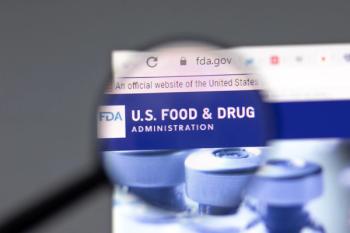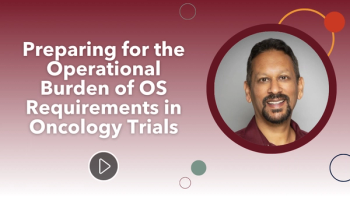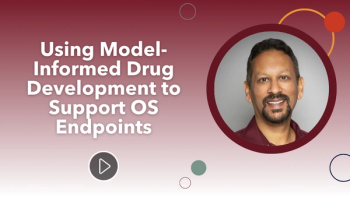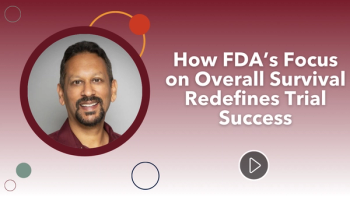
Drug Developers Embrace the Rising Prominence - and Influence - of Patient Advocacy
Patient advocates are witnessing a shift in the culture of drug development as sponsors and regulatory agencies show more interest in incorporating patient perspectives.
Look up the
One of those 130-plus consortia, the Lysosomal Disease Network alone consists of 35 organizations that specialize in various aspects of lysosomal storage disease - disorders that render the body’s cells unable to produce an enzyme that breaks down large molecules. Those 35 groups today are studying 42 specific disorders with strong support from the patients and family members who endure the devastating consequences common to these afflictions.
Thirty years ago, it was a much different world. Patient advocacy groups were far fewer in number and impact, their work relegated largely to promoting awareness, raising money, and helping drug companies promote clinical trials. It wasn’t until a not-so-rare disease - the HIV and AIDS epidemic of the 1980s - that advocates took on a more substantial role. In particular, 1988 stands out as the year that the FDA began working with AIDS activists and awakened to the power of patient engagement.
1988: Enter the AIDS activists
It did not happen quietly. In 1988, AIDS activists staged a Columbus Day rally at the Department of Health and Human Services in Washington, D.C., and the next day seized control of the FDA headquarters in suburban Maryland. The highly publicized unrest focused the nation’s attention on the AIDS crisis and gave rise to productive dialogue between the agency and the patient community.
Three years later, the agency began recruiting patient advocates into its Patient Representative Program, which coordinates recruitment, training and retention of patient representatives who have direct experience with diseases. Today, the program claims members who are knowledgeable and experienced in more than 300 diseases and conditions, sit on 47 FDA advisory committees and panels, and serve as voting members - and it’s actively recruiting people who have been diagnosed with, or who have advocacy experience with, 16 conditions.
But probably the greatest impetus for expanding the advocate role is FDASIA, the FDA Safety and Innovation Act of 2012. The law specifically requires the agency to develop and implement strategies to solicit patient viewpoints during the development of medical products and to consider patient perspectives during regulatory deliberations. It also authorizes the FDA to collect industry user fees to fund reviews of drugs, medical devices, and biosimilar biological products; promotes innovation to speed access to safe and effective products; and enhances the safety of the drug supply chain.
FDASIA mandated the institution a five-year Patient-Focused Drug Development program to learn from patients about the impact of disease on their daily lives and convened numerous public meetings focused on specific disease areas. It also set up a public-private working group to gather input from a variety of stakeholders and experts to advise the FDA on creating a risk-based regulatory framework pertaining to health information technology.
A couple of other FDA firsts:
- In 2001, the agency began seeking patient input on early development of medicinal products, and 2012 saw the debut of the FDA Patient Network. With more than 200 patients, caregivers, patient advocates, and disease-specific advocacy organizations, the network facilitates patient engagement with agency decision-makers and educates people about how new medications and medical devices move from concept to market.
- Agency guidance issued in 2015 on treatment of Duchenne muscular dystrophy marked the first time the FDA published recommendations initially composed by a disease community. Advocacy group Parent Project Muscular Dystrophy led the preparation of the document, drawing on input from patients, parents, caregivers, clinicians, academic experts, and representatives from the pharma industry to draft what frames the agency’s current thinking on the subject. Never before had an external organization made such a profound impact on U.S. government drug policy.
A new breed of patient advocate
Parent Project Muscular Dystrophy is one of a relatively new breed of advocacy organizations - large and sophisticated, with big budgets and lobbyists and run by boards of directors. At the other extreme are shoestring organizations, in some cases no more than a couple of parents just trying to raise money to fund research and hope. Wherever they fall in this continuum, all these organizations share a commitment to being involved - by supplying us with data and by taking on the role of research partner.
I frequently encounter people from these organizations as I travel, and a clear common denominator is a deep commitment to their causes. They view their relationship with pharma companies and CROs as very much a two-way street and want to know how the data they’re supplying is being used. They want seats on advisory boards and committees and seek input into trial design and execution. In short, they want -and I believe they deserve - insight into the end game. Recognizing the potential benefits from this emerging partnership, organizations that provide trial funding have begun to insist on participation from advocacy groups.
Industry has moved far beyond treating an advocacy strategy as a “nice-to-do” and is doing more to engage with these groups up front and make clear exactly what we want from them - and what we’re willing to give back. These very positive trends are leading to highly productive dialogue that is advancing the cause of scientific discourse.
About a year after FDASIA was formed in 2012, the FDA created a working group to address its goals of expanded patient participation in medical product development. The group sought public input on the subject in late 2014, gathering 185 comments from patients, advocacy groups, and industry trade organizations. In January 2016, the agency
- The need for systematic patient engagement, including creation of a central office to advise the FDA commissioner on patient engagement activities. The agency wants drug companies and researchers to more actively listen to patients, and for good reason. Researchers sometimes focus on measures of progress that may not really be meaningful to the people we’re trying to help. For example, establishing an endpoint of alleviating symptoms when all the patients really want is for their symptoms to stop getting worse.
- Clarification of FDA policies to promote early interaction between the FDA and sponsors, and clearer guidance on interactions between patients and manufacturers to facilitate collaboration in the early stages of R&D.
- Transparency and communication, including a regular report that summarizes participation in the Patient Representative Program and increased transparency in how patient input is evaluated and incorporated into agency decision-making. Also recommended: a patient data collection tool that organizes issues by disease area and facilitates communication among organizations.
- Alternative clinical investigation processes, such as expanded use of patient-centered and patient-reported outcomes on such measures as physical function and quality of life - much like what the EMA has done in its Patient-Reported Outcome qualification process.
- Greater use of workshops and partnerships to promote cooperation among patients, industry, clinicians, the scientific community, and the FDA.
Patient advocates are “witnessing a shift in the culture of drug development,” with sponsors and regulatory agencies showing more interest in incorporating the perspectives of patients, the nonprofit EveryLife Foundation for Rare Diseases declared in a
Juliet Moritz is Executive Director of the Strategic Development Department of Rare Diseases, Premier Research
Newsletter
Stay current in clinical research with Applied Clinical Trials, providing expert insights, regulatory updates, and practical strategies for successful clinical trial design and execution.






.png)



.png)



.png)
.png)
